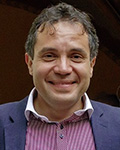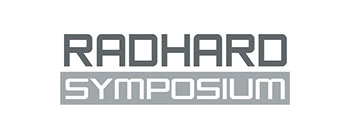Abstract

Charged-particle dosimetry, LET spectrometry and wide field-of-view directional tracking of space radiation in LEO orbit with miniaturized Timepix3 monitor onboard One-Web Joeysat satellite
Carlos Granja1, Lukas Marek1, Tomas Baca2, Victor Colas3, Marco Sabia3, Maxime L’Huillier4, Emmanuel Plascencia4, Benjamin Azoulay4, Marco Vuolo5, et al.,
1 Advacam, Prague, Czech Republic
2 Czech Technical University in Prague, Czech Republic
3 One Web, London, United Kingdom
4 Oledcomm, Velizy, France
5 European Space Agency, ESTEC, Noordwijk, The Netherlands
Abstract
The mixed-composition and widely variable radiation field in LEO orbit is measured and characterized in high-resolution by a miniaturized low-power radiation monitor based on the semiconductor pixel detector Timepix3. Configured as the RadMon MPX monitor the detector is deployed in LEO orbit (600 km, polar sun synchronous) onboard the Joeysat One Web satellite (launched May 2023). The detector configuration and operation duty cycle were customized to enable an evenly distributed temporal operation (per-minute intervals) in view of the spacecraft resources (power supply) and payload memory slot and downlink data rate. The detector quantum imaging sensitivity [1] together with in-beam calibrations and detailed data processing (on ground) provide high-resolution information on radiation-particle type classes [2] resolved with spectral (energy loss, linear-energy-transfer LET) and directional-tracking information. Spacecraft time and spacecraft navigation-position stamp yield detailed radiation maps along the satellite orbit. Particle fluxes (total, partial) and dose rates (total, partial) are produced in wide range (over 8 order of magnitude) together with charged particle (proton, electron) LET spectra (range 0.01 – 500 keV/μm in silicon). These physics data products serve for detailed studies and in-orbit monitoring of radiation effects.
References
[1] C. Granja, S. Pospisil, “Quantum Dosimetry and Online Visualization of X-ray and Charged Particle Radiation in Aircraft at Operational Flight Altitudes with the Pixel Detector Timepix”, Adv. Space Research 54 (2014) 241-251
[2] C. Granja, J. Jakubek, S. Polansky, et al., Resolving power of pixel detector Timepix for wide-range electron, proton and ion detection, Nuclear Instr. Methods A 908 (2018) 60-71
[3] C. Granja, C. Oancea, J. Jakubek, et al., Wide-range tracking and LET-spectra of energetic light and heavy charged particles, Nucl. Instrum. and Methods A 988 (2021) 164901
Acknowledgments
Work performed in frame of One Web Contract.
![[Translate to English:] [Translate to English:]](/fileadmin/uploads/intranet/events/radhard/2023/header-radhard2023.jpg)
